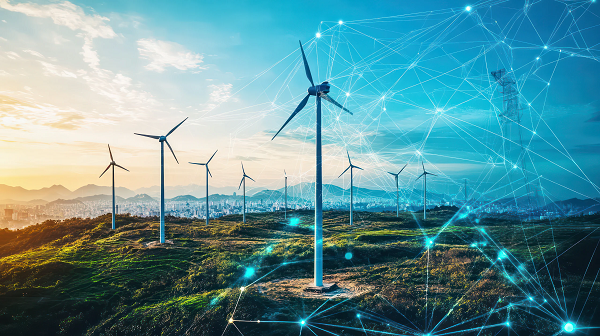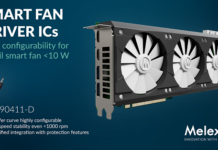As the Internet of Things (IoT) and Industrial IoT (IIoT) continue to expand device deployment across homes, cities, and factories, one persistent challenge remains: how to power the growing number of connected devices without relying on traditional wiring or frequent battery replacements. In response, energy harvesting has emerged as a practical and increasingly vital solution—capturing ambient energy from sources like light, motion, heat, and radio waves to keep devices running independently.
This blog explores how energy harvesting is reshaping the deployment of IoT systems. We’ll examine the technologies behind it, the types of energy sources being tapped, and how engineers are designing smarter, more sustainable devices that are making battery-free IoT a reality.
The Power Problem in a Connected World
The promise of IoT is vast, with smarter homes, more efficient factories, and cities that can operate with autonomy. But every sensor, actuator, and wireless node in this ecosystem needs power. Traditionally, that’s meant either wiring them into the grid or relying on batteries—both of which come with limitations. Wiring is expensive and inflexible. Batteries, while convenient, eventually run out, requiring maintenance that is costly and sometimes impractical.
Enter energy harvesting: the process of capturing ambient energy from the environment—light, heat, motion, or even stray radio signals—and converting it into usable electricity. It’s not a new idea, but recent advances in ultra-low-power electronics and harvesting technologies have made it a practical solution for a variety of applications.
Matching Source to Scenario
Energy harvesting isn’t a one-size-fits-all solution. Different environments call for different sources, and each has its strengths.
Solar power is the most familiar harvested power source. Outdoor solar panels are already common, but new photovoltaic materials like perovskites are making it possible to harvest energy even from indoor lighting. These flexible, low-light PV cells can be shaped to fit around enclosures or embedded into surfaces, opening up new design possibilities.
Kinetic energy—from wind, water, or vibration—is another rich source. Think of a tiny dynamo spinning in the breeze or a piezoelectric element that generates a charge when compressed. In industrial settings, vibration from motors or machinery can be tapped to power nearby sensors. Even the act of pressing a button can generate enough energy to send a wireless signal. By capturing mechanical energy from repetitive motion, such as the hum of a motor or the footsteps of pedestrians, devices can convert this kinetic activity into usable electricity. These techniques are especially valuable in environments where motion is constant and predictable, offering a reliable and maintenance-free energy source for embedded systems.
Thermoelectric generators (TEGs) use the temperature difference between two surfaces to produce electricity. TEGs are ideal for industrial environments where waste heat is abundant, like from the side of a furnace or a hot pipe.
Ambient RF energy is perhaps the most futuristic-sounding of all current energy harvesting sources. It involves capturing stray radio waves from Wi-Fi, cellular networks, or dedicated RF transmitters and converting them into power. While the energy levels are low, they’re often enough for ultra-efficient devices like electronic shelf labels or low-duty-cycle sensors.
Smarter Systems, Smarter Power
Of course, harvesting energy is only half the battle. Managing it efficiently is just as critical. That’s where modern microcontrollers and power management integrated circuits (PMICs) come in. Today’s embedded systems can operate on microwatts of power, thanks to deep sleep modes and intelligent scheduling of tasks. Energy harvesting ICs often include built-in power regulation and storage management, ensuring that even intermittent energy sources can keep devices running smoothly.
Designers are also exploring hybrid approaches that involve combining multiple harvesting methods or supplementing them with rechargeable batteries or supercapacitors. This not only increases reliability but also allows for more flexible deployment in environments where one energy source might not be consistently available.
PMICs are critical in this setup. These chips regulate the flow of energy between the harvester, the storage element, and the load. Some PMICs are designed to work with multiple types of harvesters, offering flexibility in system design and deployment.
Why It Matters—Now More Than Ever
The implications of energy harvesting go far beyond convenience. It enables truly wireless, maintenance-free devices that can be deployed in places where power was once a barrier—remote agricultural fields, historic buildings, or inside sealed industrial equipment. Implementing harvesting techniques reduces electronic waste by extending or eliminating battery life. Additionally, energy harvesting accelerates the rollout of IoT infrastructure by resolving one of its biggest logistical hurdles: power.
As the IoT continues to scale, the demand for sustainable, low-maintenance power solutions will only grow. Energy harvesting isn’t just a clever trick—it’s a foundational technology that’s helping to realize the full potential of connected systems.
Conclusion
The evolution of energy harvesting marks a pivotal shift in how connected systems are designed and deployed. As microcontrollers and wireless technologies continue to reduce their power demands, the threshold for viable ambient energy sources lowers in parallel. This convergence is enabling a new generation of devices that are more sustainable as well as more adaptable to diverse and challenging environments.
With ongoing advancements in materials science and power management, energy harvesting is poised to become a pivotal element in the architecture of future IoT and IIoT ecosystems. Its increasing role signals a move toward infrastructure that is less dependent on traditional power sources, and in doing so, offers greater flexibility, reduced maintenance, and a more seamless integration of technology into everyday life. From smart cities to remote monitoring, energy harvesting is laying the groundwork for a more autonomous and sustainable future.
Source: Mouser blog

















